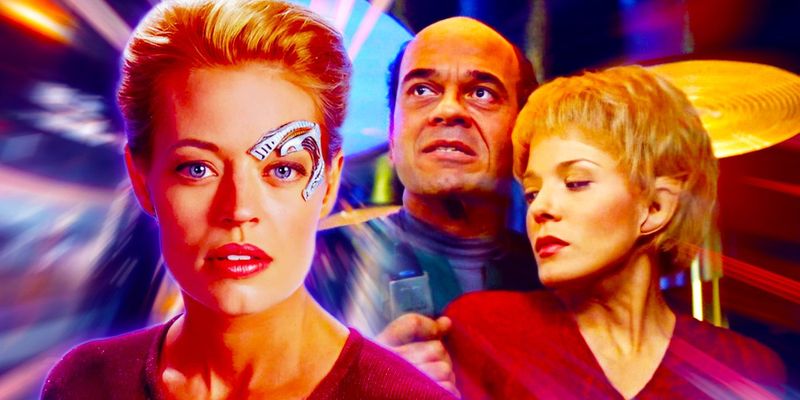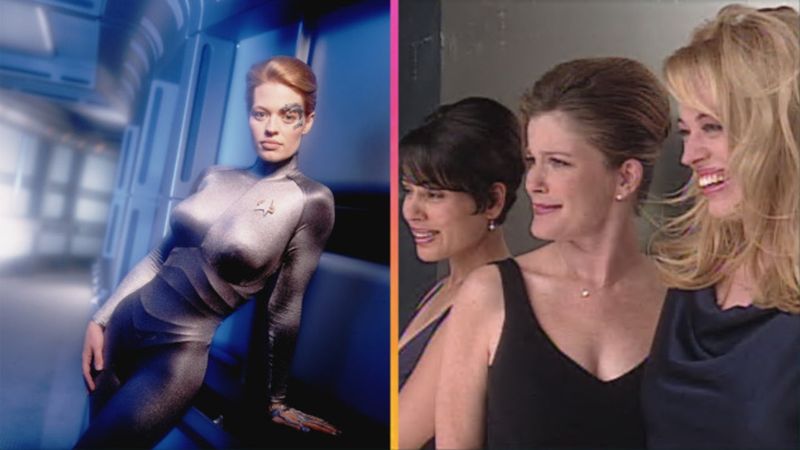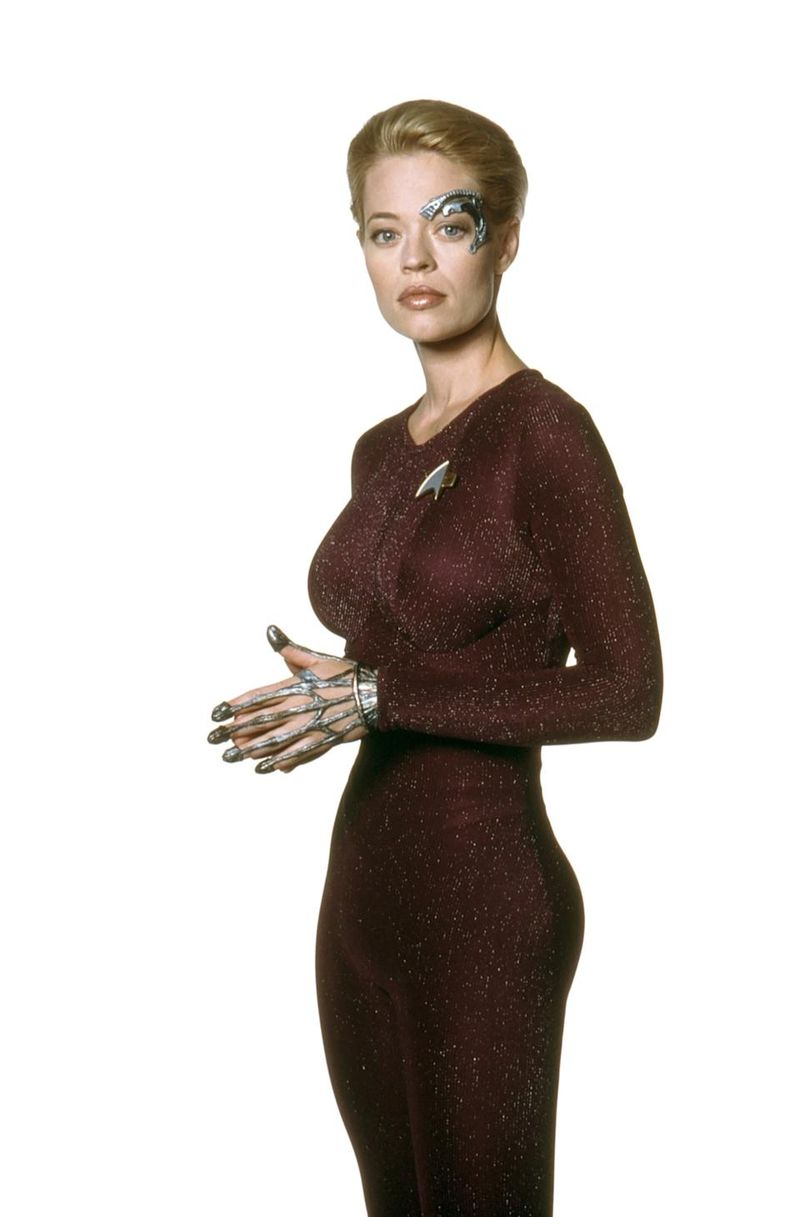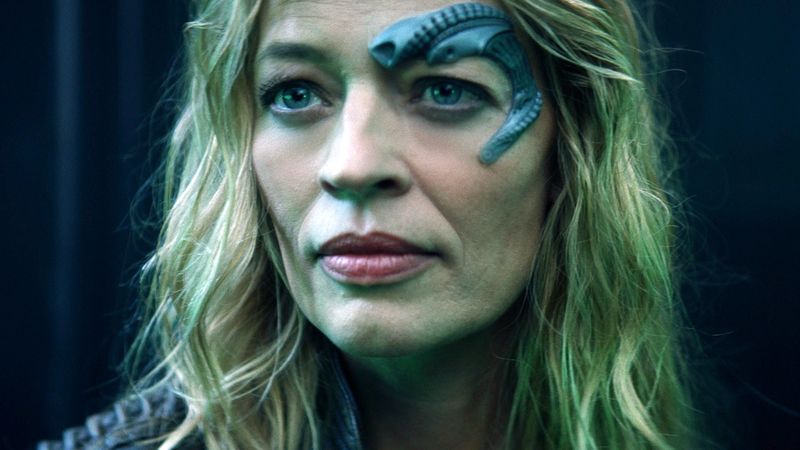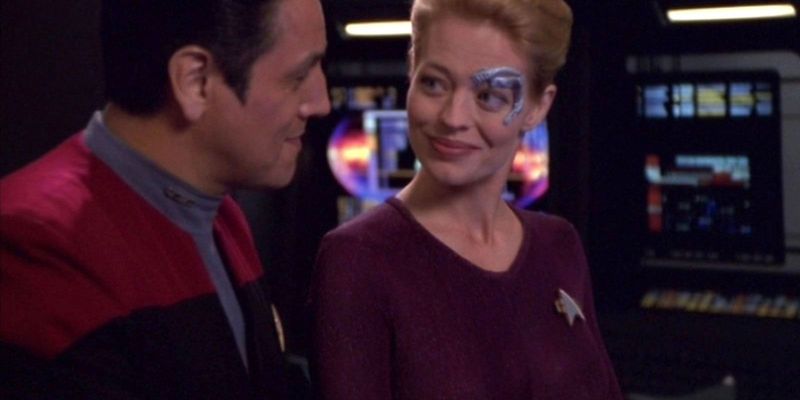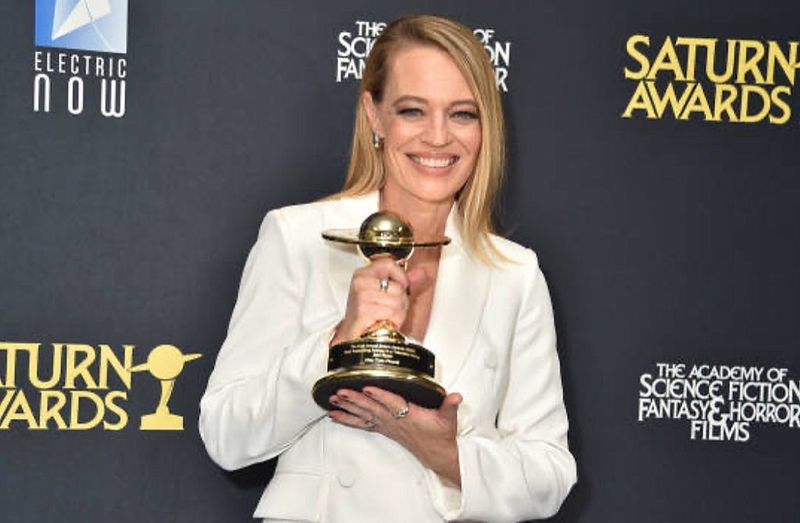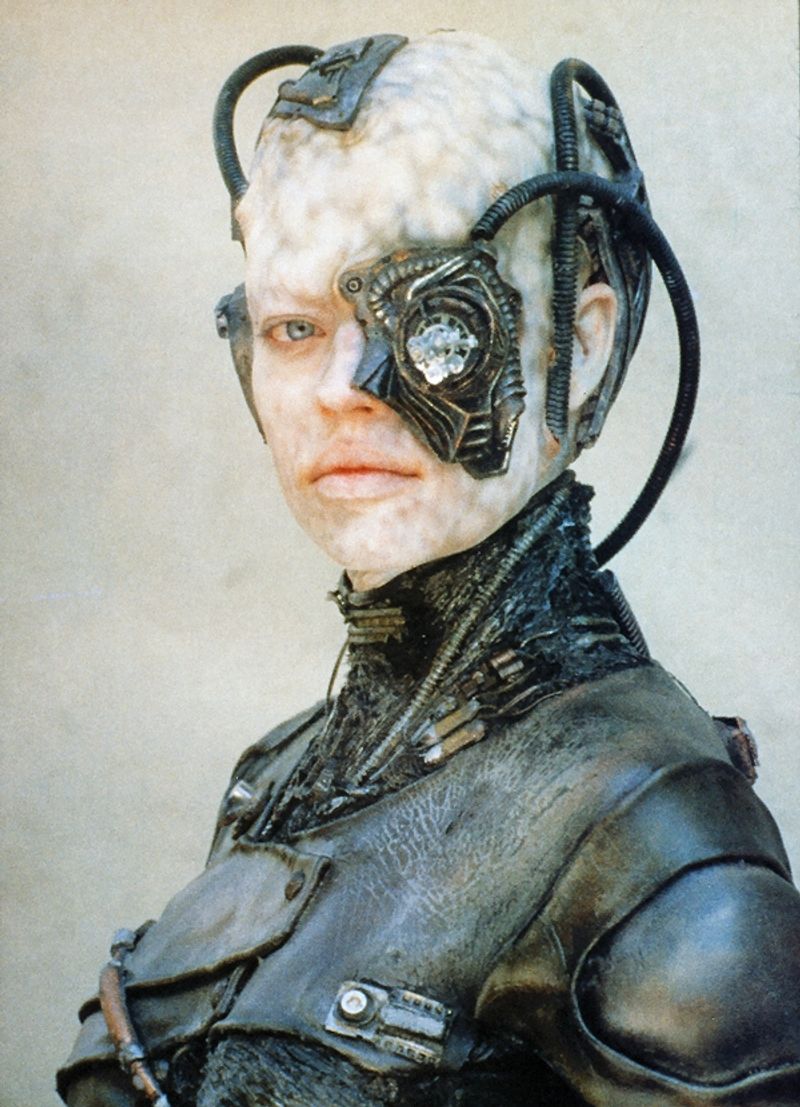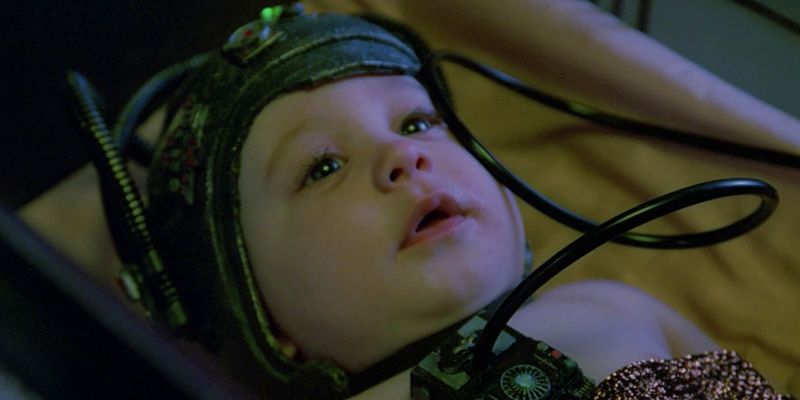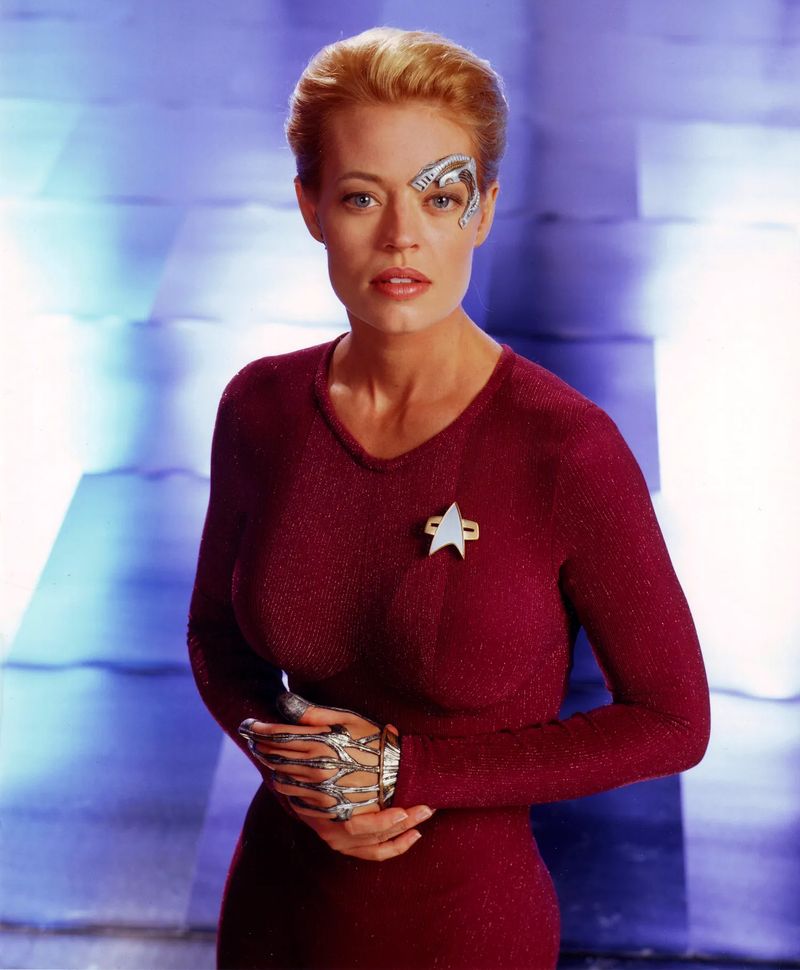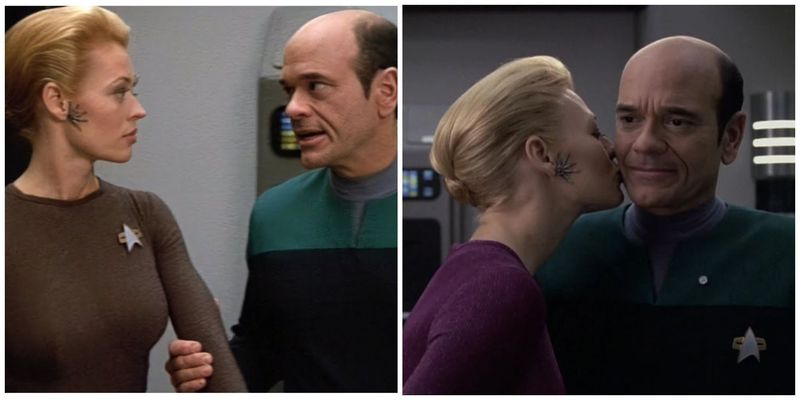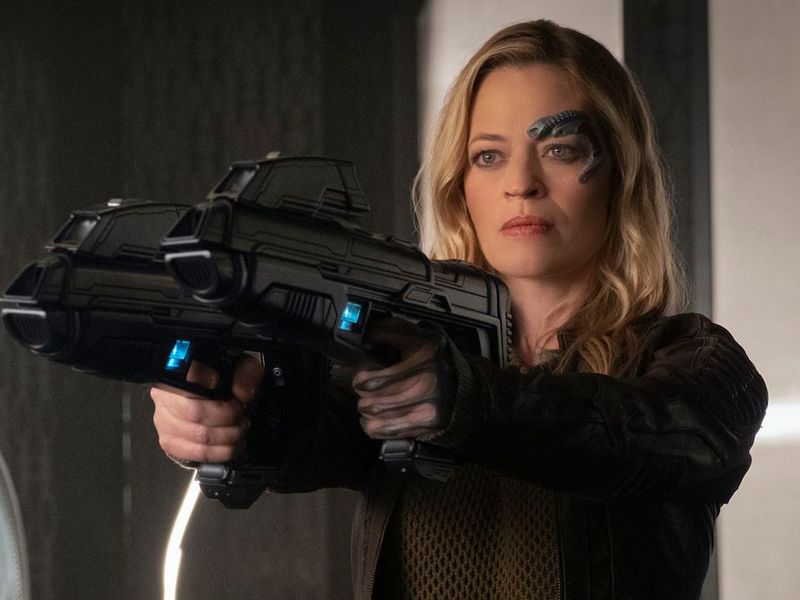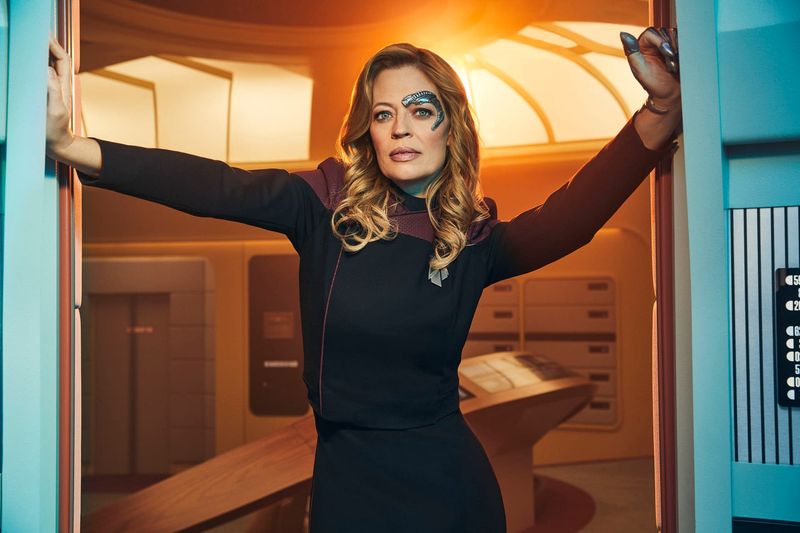From Borg drone to beloved Star Trek icon, Seven of Nine (Annika Hansen) remains one of the most compelling characters in the franchise. Played by Jeri Ryan, she brought depth, strength, and complexity to Star Trek: Voyager. Here are 15 fascinating facts about Seven of Nine that even die-hard Trekkies might not know!
1. Originally Meant to Replace Kes
Seven of Nine was introduced in Voyager’s fourth season to replace Kes (Jennifer Lien), whose character was written out for a fresh dynamic. The showrunners sought a shift in energy and brought in the ex-Borg with a human past.
Intriguingly, Seven’s character offered a new narrative thread for exploring humanity through the lens of a former drone. Her interaction with the crew added layers to the storyline.
This decision refreshed the series, adding suspense and intrigue. The tension between her Borg identity and emerging humanity became central to the plot.
2. Jeri Ryan’s Audition Changed Everything
Jeri Ryan’s audition left an indelible mark on the producers, elevating Seven’s role beyond initial plans. Her portrayal imbued the character with a complexity that demanded more screen time.
Producers were captivated by her ability to express subtle emotions through a stoic exterior, making Seven a central figure. This transformation in plans highlighted Ryan’s acting prowess.
The character’s expanded presence contributed significantly to Voyager’s success, drawing viewers into her unique journey. Ryan’s performance intertwined with Seven’s narrative, making her an unforgettable part of the Star Trek universe.
3. The Catsuit Was Extremely Uncomfortable
Seven’s skintight Borg-enhanced bodysuit became iconic, yet it was a nightmare to wear. Each day, Ryan was sewn into it, and the tightness made it almost impossible for her to sit between takes.
This discomfort was offset by the striking visual impact of the costume, which became a symbol of her dual identity. The suit highlighted the theme of her struggle between Borg and human nature.
Despite the challenges, the costume played a crucial role in defining Seven’s visual identity, leaving a lasting impression on audiences and adding depth to her character.
4. She Was Almost Named “Eight of Nine”
In early scripts, she was referred to as Eight of Nine, but “Seven” was chosen for its melodic sound. This subtle change had a profound effect on the character’s identity.
Her full Borg designation, “Seven of Nine, Tertiary Adjunct of Unimatrix Zero-One,” became iconic. It encapsulated her connection to the Borg while hinting at her individuality.
The name “Seven” carried musicality and significance, reflecting her journey of self-discovery. It became more than just a number; it was a part of her reclamation of humanity.
5. Her Borg Implants Were Real (Sort Of)
The Borg prosthetics took 3.5 hours to apply daily, transforming Ryan into Seven. The collar was so heavy it caused neck issues, while her ocular implant occasionally scratched her eye.
These challenges underscored the sacrifices Ryan made to portray the character authentically. The physicality of the role added depth to her performance, allowing viewers to believe in her dual nature.
The meticulous application of these prosthetics emphasized the show’s commitment to authenticity, enhancing the character’s believability and making Seven a convincing part of the Star Trek universe.
6. Seven’s Humanity Arc Was Inspired by Data
Like TNG’s Data, Seven’s journey explored what it means to be human. However, her struggle was emotionally richer—relearning instincts like humor, friendship, and even sarcasm.
Her arc was a mirror to Data’s, offering a nuanced exploration of humanity through the eyes of one who once forfeited it. This parallel created a bridge for fans between two beloved characters.
The emotional depth of her journey resonated with audiences, showcasing the complexity of regaining lost humanity. It was a testament to the enduring theme of identity within the Star Trek universe.
7. She Was Almost Romantically Paired With Chakotay
A late-series romance with Chakotay (Robert Beltran) was abruptly written in. Fans found it forced, and even actors felt it lacked authenticity.
The pairing seemed contrived, sparking debate about character consistency. Despite the controversy, it prompted discussions about relationships and their portrayal in sci-fi.
The romance highlighted the challenges of integrating human connections into a narrative primarily focused on exploration. Though short-lived, it remains a memorable aspect of Seven’s storyline.
8. Jeri Ryan Won Multiple Awards for the Role
Jeri Ryan received four Saturn Award nominations for Best Supporting Actress, winning once—Voyager’s only acting win. Her portrayal of Seven was praised for conveying emotion through a stoic character.
The accolades highlighted her ability to breathe life into a complex character, earning her a place among Star Trek’s most memorable icons.
The recognition extended beyond awards, cementing her legacy within the franchise. Ryan’s nuanced performance established a new standard for character depth and emotional resonance in science fiction.
9. Seven’s Parents Were Assimilation Researchers
Her backstory reveals parents as Starfleet scientists studying the Borg. Their ship was captured when she was six, leading to her 18-year assimilation.
This history added layers to her character, turning tragedy into a key aspect of her identity. The narrative of a lost childhood resonated deeply with fans.
Understanding her origin provided context for her struggle between Borg and human sides. Her parents’ fate was a poignant reminder of the dangers of exploration, enriching her narrative.
10. She Returned in Star Trek: Picard
Decades later, Ryan reprised her role in Picard as a hardened, disillusioned ex-Borg—now a Fenris Ranger. Fans loved her reunion with Picard and new dynamic with Raffi.
The evolution of her character from Voyager to Picard showcased her resilience and growth. Her presence in the series connected past and present storylines.
The return of Seven was a testament to her enduring impact, bridging generational gaps within the Star Trek fandom. Her storyline continued to explore themes of identity and redemption.
11. Seven’s “Borg Baby” Episode Was Controversial
In “Drone” (S5E2), Seven’s nanoprobes accidentally create a Borg child, highlighting her maternal instincts and the tragedy of Borg existence.
The emotional episode showcased her capacity for care despite her Borg past, adding depth to her character. It sparked discussion among fans about the complexities of her identity.
This storyline was a poignant exploration of creation and loss, resonating with viewers. The episode became memorable for its emotional impact and exploration of humanity within the collective.
12. She Hated Being Called “Seven” at First
Early on, she insisted on “Seven of Nine,” a subtle way to show her lingering Borg identity. Over time, she accepted just “Seven,” symbolizing her humanity returning.
This evolution in how she was addressed marked a significant shift in her character arc. It reflected her journey toward self-acceptance and the reclamation of her individuality.
The transition from full designation to a single name was symbolic of her transformation. It was a gradual, meaningful step towards embracing her human side.
13. Her Relationship With the Doctor Was Key
The EMH (Robert Picardo) became her mentor, teaching her social norms. Their bond was one of Voyager’s most touching dynamics.
Their interactions provided comic relief and profound moments, adding layers to Seven’s journey. The Doctor’s guidance was instrumental in her adaptation to life aboard Voyager.
This relationship highlighted themes of friendship and mentorship. It underscored the importance of human connection, even for those who struggle to understand it.
14. She Was Almost in Star Trek: Nemesis
A scene featuring Seven was scripted for the 2002 film but cut. Ryan later joked, “I got to keep the paycheck, though!”
The potential appearance in Nemesis reflected her continued popularity and relevance within the Star Trek universe.
Though not realized, the idea of her inclusion speaks to her character’s enduring appeal. Fans continue to speculate about what her role might have been, reflecting on her lasting impact.
15. Seven’s Legacy Lives On
From Voyager to Picard, Seven remains a fan favorite—a symbol of resilience, redemption, and what it means to reclaim one’s identity.
Her character has inspired countless fans, becoming an enduring part of the Star Trek legacy. She represents the possibility of growth and change, even from the darkest origins.
Her story continues to resonate with audiences, reminding them of the strength in vulnerability. Seven’s journey is a testament to the power of storytelling in science fiction.

